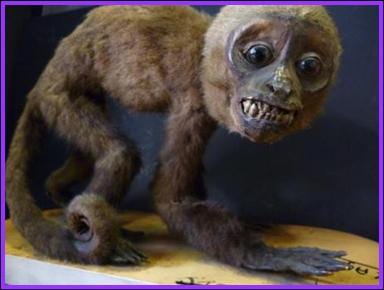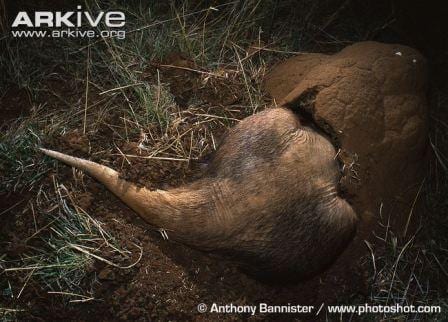Specimen of the Week: Week 101
By Emma-Louise Nicholls, on 16 September 2013
 Well, after the excitement of the last ten weeks I bet you thought I was out of ideas to entertain you with eh? Nope, that is the benefit of working in one of the most incredible collections known to man (this man at least. Or woman, more accurately), there is always something exciting to talk about. This week I have an animal for you that, in its non-skeletal form, resembles an overgrown sparsely furred dog with a wallaby’s tail and a fennec fox’s ears. Got a clear picture? This week’s Specimen of the Week is…
Well, after the excitement of the last ten weeks I bet you thought I was out of ideas to entertain you with eh? Nope, that is the benefit of working in one of the most incredible collections known to man (this man at least. Or woman, more accurately), there is always something exciting to talk about. This week I have an animal for you that, in its non-skeletal form, resembles an overgrown sparsely furred dog with a wallaby’s tail and a fennec fox’s ears. Got a clear picture? This week’s Specimen of the Week is…
**The Aardvark skeleton**

The aardvark skeleton (Orycteropus afer) lovingly
standing over an infant aardvark in a jar. LDUCZ-Z144
1) The name aardvark means ‘earthpig’ in Afrikaans. Not a randomly chosen language, aardvarks are native to Africa (as is the language Afrikaans- primarily spoken in South Africa, though also found in parts of other African countries as well). Aardvarks have stretched their legs from South Africa all the way up to Senegal in the West and across to Ethiopia in the East. After a meeting of the elders they decided however to boycott the Namib Desert. Our particular skeleton is a South African. Or at least, that’s where s/he had retired to before his/her demise.
2) Aardvarks live in a variety of environment types including grasslands, savanna, woodland, and even rainforests. They tend to avoid rocky ground however, simply because it is too hard to dig in. Their distribution is governed by their stomachs (very sensible) meaning the number of aardvarks in any given area is directly related to the abundance (or lack) of ant and termite occupants. Aardvarks spend a lot of their time digging, for which they have perfectly suited enormous claws. They use their claws to forage for food as well as to dig burrows that can end up measuring up to three metres in length.

An aardvark getting stuck in to meal time, with its
head in a termite nest. (Image by Anthony Bannister
www.photoshot.com. Image obtained from
www.ARKive.org)
3) Aardvarks are nocturnal creatures, and so use their burrows to rest during the day as well as to hide in to escape predators. When breeding, they go quite a few steps further in their excavations and build extensive tunnel systems, up to 13 m in length, in which the female will give birth. As well as aardvark shenanigans, the walls of these tunnels also witness the comings and goings of many other African vertebrates and invertebrates. These non-species specific terms and conditions of usage make the aardvark burrows, and more to the point the actual aardvarks, extremely important for the health of the ecosystem in general.
4) Aardvarks feed almost exclusively on ants and termites, though there is a large number of species from which to choose each meal time. Aardvarks will eat up to 50,000 individuals in a single night. No wonder ants have so many babies eh. Aardvarks can regularly be seen slowly wandering along a zigzag path. Despite appearances, they are not lost or drunk, this is merely their chosen method of foraging for prey. They will cover an area around 30 metres wide doing this. Unfortunately for their street cred, aardvarks walk on their claws which results in a shambling cumbersome lope that undoubtedly adds to the suspicion of inebriation by passers by. A tail trail follows the aardvark as an impression is left in the sand as the tail is dragged along the floor.
5) The aardvark has a very sticky tongue. More impressively, the tongue is 30 centimetres in length. The definition of home-wrecker, aardvarks physically break into ant and termite mounds using their strong front claws. They then insert their sticky tongue into the nest to lap up the disgruntled ants and termites. Although they do possess grinding teeth, they do not chew their food. Instead they swallow the ants and termites whole which get ground up in a muscular stomach. Yum.
Emma-Louise Nicholls is the Museum Assistant at the Grant Museum of Zoology
 Close
Close


